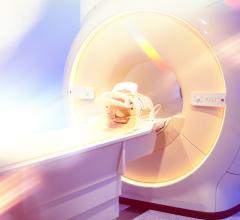
Image courtesy of The Ohio State University James Comprehensive Cancer Center
November 21, 2018 — The Ohio State University Wexner Medical Center and the Arthur G. James Cancer Hospital and Richard J. Solove Research Institute are collaborating with Nationwide Children’s Hospital to bring the first proton therapy treatment facility to central Ohio. This will offer state-of-the-art radiation oncology treatment for adult and pediatric cancer patients in one place.
The proton center will be located at the new 340,000 square-foot outpatient facility planned for Ohio State’s west campus. The proton therapy portion is expected to utilize 55,000 square feet and cost approximately $100 million. Nationwide Children’s has committed to up to 50 percent of the expected proton center project cost.
“This is a significant advancement for our patients and their families,” said Ohio State President Michael V. Drake. “As part of our nationally renowned Wexner Medical Center, comprehensive cancer center and health sciences campus, this facility will spark leading-edge research, inspire new academic partnerships and drive innovative solutions to combat this ubiquitous and devastating disease.”
Proton therapy is an advanced type of radiation treatment that uses protons (positively charged particles) instead of X-rays to kill cancer cells. A machine delivers a high-energy proton beam painlessly through the skin from outside the body.
“As central and southern Ohio’s only National Cancer Institute-designated comprehensive cancer center, it’s our duty to bring advanced, evidence-based treatment options like proton therapy to the region for benefit of patients in need of this type of subspecialized care,” said William Farrar, M.D., interim chief executive officer of The James.
Proton therapy can be used alone or in combination with other therapies to treat several localized cancers, including prostate, brain, head and neck, lung, spine and gastrointestinal in adults, as well as brain cancer, lymphoma, retinoblastomas and sarcomas in children.
“Having a proton therapy treatment facility in Columbus will enable more pediatric patients from central Ohio to receive all of their cancer treatment closer to home,” said Timothy Cripe, M.D., Ph.D., division chief of hematology, oncology, bone marrow transplantation at Nationwide Children’s. “As a national leader in pediatric research and quality improvement, we can establish clinical trials that focus on how proton therapy affects specific types of pediatric cancer. Furthermore, because we always seek to provide best outcomes for all our patients, we’ll examine quality improvement best practices for administration and safety.”
Children are vulnerable to the long-term side effects of radiation, including growth abnormalities, cognitive impairment, heart damage and other complications such as radiation-induced secondary cancers later in life. The American Society of Clinical Oncology reports proton therapy may deliver up to 60 percent less radiation to healthy surrounding tissue and a higher dose to the tumor itself. This makes it an important treatment option for certain pediatric cancers.
“It’s important to note that traditional targeted radiation therapy techniques are still highly effective for many solid tumors, but proton therapy is an exciting new option for localized tumors. It allows us to deliver the highest concentration of treatment directly to cancerous tissue, while sparing delicate surrounding tissue that – if damaged as a side effect of cancer treatment – could result in quality-of-life impacting toxicity,” said Arnab Chakravarti, M.D., chair of radiation oncology at The James.
The new proton therapy center, managed by The James radiation oncology experts, is expected to open in 2021.
For more information: www.cancer.osu.edu


 March 28, 2024
March 28, 2024 








